Super Mario Bros. 3 deserves all the praise it gets. But you know what? Personally, it's not my favorite. I don't hate it or anything, but I actually like Mario 2 more than Mario 3. I know, sacriledge, right? I just wasn't as big of a fan of the slippy slidey controls and the super short levels of 3. But the power-ups sure were awesome and this was the game that introduced the Koopalings, who I think are cool. Really my favorite Mario game is either Super Mario World or Yoshi's Island, depending on my mood.
Super Mario Bros. 3 Review Rewind
|
|
See PixlBit's Review Policies

On 06/10/2021 at 09:00 AM by Jamie Alston Platforming perfection |

A must-have for any nostalgic NES fan.
On October 23, 1988, Mario series creator Shigeru Miyamoto and his crack team of Nintendo EAD ninjas released Super Mario Bros. 3 in Japan. To coincide with its US launch 16 months later, Nintendo produced a commercial featuring kids clamoring for the game like it was the second coming of Christ. The hype was intense, and it worked exceedingly well. The game went on to exceed the first one in sales, fandom, and legendary status. Mario and the crew had undeniably hit their stride.
Before its release in the US, anticipation for the game was building thanks to a movie called “The Wizard.” Nintendo licensed certain NES products to be shown as a means of advertising to get kids (and their parents) rushing to the nearest toy store to buy their stuff. One of the biggest showpieces (and the only reason I saw the movie) were scenes from Mario’s latest adventure.
Well, Bowser is up to his old tricks again, which means that it’s time for Mario & Luigi to embark on another adventure. The Mushroom Kingdom is not under threat this time, but all is not well in the nearby Mushroom World. Bowser has sent his Koopalings- Larry, Roy, Lemmy, Iggy, Wendy, Morton Jr., and Ludwig Von Koopa- to make trouble as they please in this otherwise peaceful place. They’ve stolen the magic wands from each country and used them to turn their kings into animals. So princess Toadstool of the Mushroom Kingdom sends Mario & Luigi off to journey deep into the Mushroom World to battle Bowser’s little troublemakers and set things back in order again.
At its core, Super Mario Bros. 3 was an excellent example of going back to go forward. The game returned to the more familiar roots of the original Super Mario Bros. Gone were the difficult level designs and poison mushrooms of the Japanese sequel and the dramatic gap in visual style and presentation of its American version. Instead, these characteristics were replaced with the tried and true mechanics of novice-friendly challenges that progressively increased, familiar power-ups, and enemy characters akin to the first game.
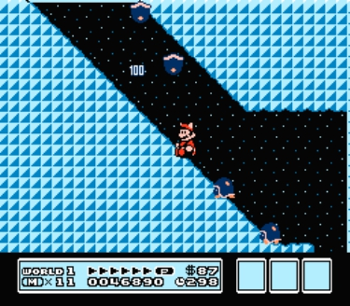
Of course, this didn’t mean that the game had nothing new to offer. Quite the contrary, plenty of significant gameplay elements were introduced that would contribute to its status as one of the most memorable gaming experiences on the NES. Additionally, this was the first Super Mario game to showcase a broader range of power-ups that would expand Mario's capabilities.
With the Super Leaf, Mario or Luigi don a raccoon costume that allows them to fly after charging their power meter by running and jumping once that meter is full. The Frog Suit helps the brothers to move with greater speed and agility underwater. It also allows them to access otherwise inaccessible pipes. Finally, the Tanooki Suit will enable them to briefly avoid damage from enemy contact by turning into a statue.
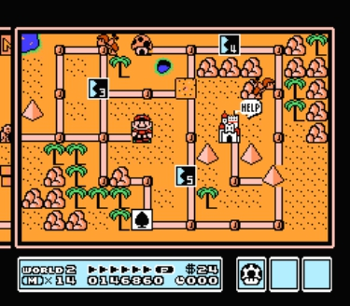
The game was also chock full of hidden secrets that the designers wanted you to find throughout the journey. The best for me was discovering the much-coveted Hammer Suit. With it, Mario and Luigi can throw hammers like the Hammer Bros., and it quickly wrecks everything, including Bowser himself. Additionally, the suit is equipped with a fire-proof shell that they can use by ducking down. Finding it is well worth the effort, provided you can manage to hang on to it. The Hammer Suit is by far one of the best items in the game. Not to mention, it’s a cool-looking sprite when the brothers are armed with it.
In addition to stomping enemies and busting bricks, Mario can also pick up the shell of a stomped Koopa Troopa (and other shelled enemies) and carry it for a short time. This technique gives you creative ways to attack other enemies or break bricks and coin blocks that couldn’t be hit from below. Where the game particularly succeeds is in how well the level design accommodates Mario’s newfound abilities. You’re encouraged to use your powers often to find platforms and pipes containing goodies that were otherwise unreachable through normal means. I never felt like the game was penalizing me for using those nifty abilities.
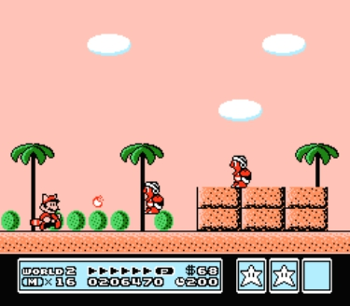
There are a total of eight worlds, each with a different environmental theme throughout. My personal favorite is Giant Land because- true to its name- the enemies and objects in many of that world’s levels are gigantic. It was a pleasant surprise once I played through it for the first time when I was a kid. Another excellent addition was the world map, where you navigated Mario to the next section of the current world you were on. This feature put the finishing touch on the presentation of the overall game.
The 2-player mode returned and was improved in two important ways. First, the game is played on a turn-by-turn basis instead of waiting for the other player to lose a life. The other notable feature is the Mario Bros. mini-game that can be played if one brother steps over on the other’s icon on the map. It was a fun way to battle for the next turn since the winner could proceed to the next level on the map.
Each level sported well-detailed graphics with unique background elements and animations for Mario. To this day, I never tire of playing through each world and taking in the visual design put into the game. In addition, the musical compositions are just as enjoyable as the other elements that make up the game.
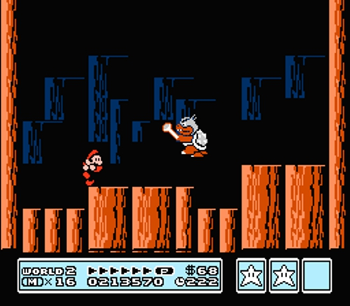
I can best describe it as being uniquely Super Mario-oriented, ranging from upbeat adventurous tunes of the over-world levels to the more foreboding melodies of the fortress and airship battles. And who can forget the Legend of Zelda reference briefly heard when using the Warp Whistle? And the game oozes personality with its roster of unforgettable enemies. From familiar foes like Goombas, Bullet Bills, and Cheep-Cheeps, to newcomers like Boo, Dry Bones, and the Koopalings, every character was a worthy addition to the Super Mario universe.
Without a doubt, this was one of the few games that lived up to the hype surrounding its release. Instead of merely riding on the coattails of the popularity generated by the previous games in the series, it far exceeded expectations most had before seeing the game in action. As a result, super Mario Bros. 3 is a prime example of making a classic well into a series’ existence.







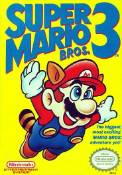

Comments